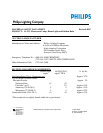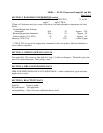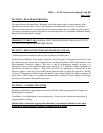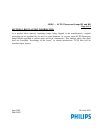
MSDS -- ALTO‘ Fluorescent Lamps HL and KB
Page 3 of 4
SECTION 6: HEALTH HAZARD DATA
Not applicable to the intact lamp. Breakage of the lamp may result in some exposure to the
phosphor powder dust and to a very little amount of elemental mercury vapor. No adverse
affects are expected from occasional exposure to broken lamps, but as a matter of good practice,
prolonged or frequent exposure should be avoided through the use of adequate ventilation during
disposal of large quantities of lamps.
EMERGENCY FIRST AID: NORMAL FIRST AID PROCEDURE FOR GLASS CUTS IF
SUCH OCCUR THROUGH LAMP BREAKAGE.
SECTION 7: PRECAUTIONS FOR SAFE HANDLING AND USE
Normal precautions should be taken for the collection of broken glass.
Waste Disposal Method: At the end of rated life, when this lamp is removed from service, it will
be subjected to the current Toxic Characteristic Leaching Procedure (TCLP) prescribed by the
Environmental Protection Agency. This test is used to determining whether an item is a
hazardous waste or a non-hazardous waste under current E. P. A. definition. Philips Lighting will
provide the test data on request. This result will allow the generator to evaluate all of the
disposal options, which may be available in the particular state in which the generator’s facility
is located. The generator should check with federal, state and local officials for their guidance. In
most states ALTO lamps are considered non-hazardous subtitle D waste. Philips encourages
recycling of its products by qualified recyclers.
SECTION 8: CONTROL MEASURES
Respiratory Protection: Appropriate dust mask should be used if large quantities of lamps are
being broken for disposal.
Ventilation: Avoid inhalation of any airborne dust. Provide local exhaust when disposing of
large quantities of lamps.
Hand and Eye Protection: Appropriate hand and eye protection should be worn when
disposing of large quantities of lamps or handling broken lamps.






